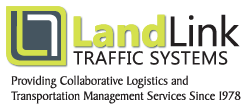On March 10, 2022, the Commodity Classification Standards Board (CCSB) issued Supplement 1 to NMF 100-AU. The National Motor Freight Classification® (NMFC®) class code changes will go into effect on April 9, 2022.
LTL carriers have been using the NMFC classifications for their rate base since the 50’s. It’s a reasonable numeric description upon which to rate a pallet of freight reasonably accurately. These recent changes are interesting. In these examples there is a common word in all freight descriptions; “density”. The industry has been moving to density based pricing for years now. These changes support the assertion by truckers that some freight cubed out to a greater price point.
Sheet or Plate, Plastic NOI, 156300 Was classified based on packaging and united inches; amending to being classified based on greatest dimension and density, 9 subs/classes.
Fruits, Meats, Vegetables and Dairy Products, 76850 Density breaks and classes Changing. Currently, classes 70, 110 and 200; will be 100, 175 and 250.
Cables, Mechanical Control, 39510 Class changed from a straight class 70 to 11 density-based freight classes.
Dimensional Weight Pricing
Dimensional weight pricing considers the space occupied by the package, along with its weight, rather than just its weight alone. It takes into account its freight density. Although, between the dimensional weight, and the actual weight, whichever is larger is the billable weight.
For example, if a customer purchases a pair of socks, and the warehouse packages them in a considerably larger box than needed, then the shipper will be charged much more for this package based on dimensional weight pricing. Because although the package is very light, it is taking up unnecessary amounts of space that could be used for other products on the truck.
Density based pricing started with the parcel carriers, air and ocean transportation; it is becoming more common with economy globalization and e-commerce growth. This method can be seen as an answer to truckload optimization for U.S. LTL carriers. Density pricing guarantees that the shipping price is based on package volume that matches the amount of space a package occupies in relation to its weight.
So, what does this mean for shippers? With more and more carriers adopting density-based pricing, new challenges have appeared for shippers who have lightweight shipments or bulky items that take up a lot of trailer space. And with the new pricing model, LTL carriers are requiring shippers to pay additional fees and are increasing the pressure to accurately measure shipments. With this more enforceable pricing and density calculators scanning most pallets the freight budget efficiency focus will have to be on the freight rate negotiations and carrier selection. It helps to have an experienced 3PL in your corner. Turn to Land Link Traffic Systems to fight for you.
Stay Safe Everyone.
To stay up to date on these and other Logistics topics subscribe to our blog @ www.Land-Link.com/blog.
Author
Michael Gaughan
Technology Officer
Land Link Traffic Systems


 Land-Link, a well respected professional organization, has been providing its clients with effective transportation and logistics solutions since 1978.
Land-Link, a well respected professional organization, has been providing its clients with effective transportation and logistics solutions since 1978.

